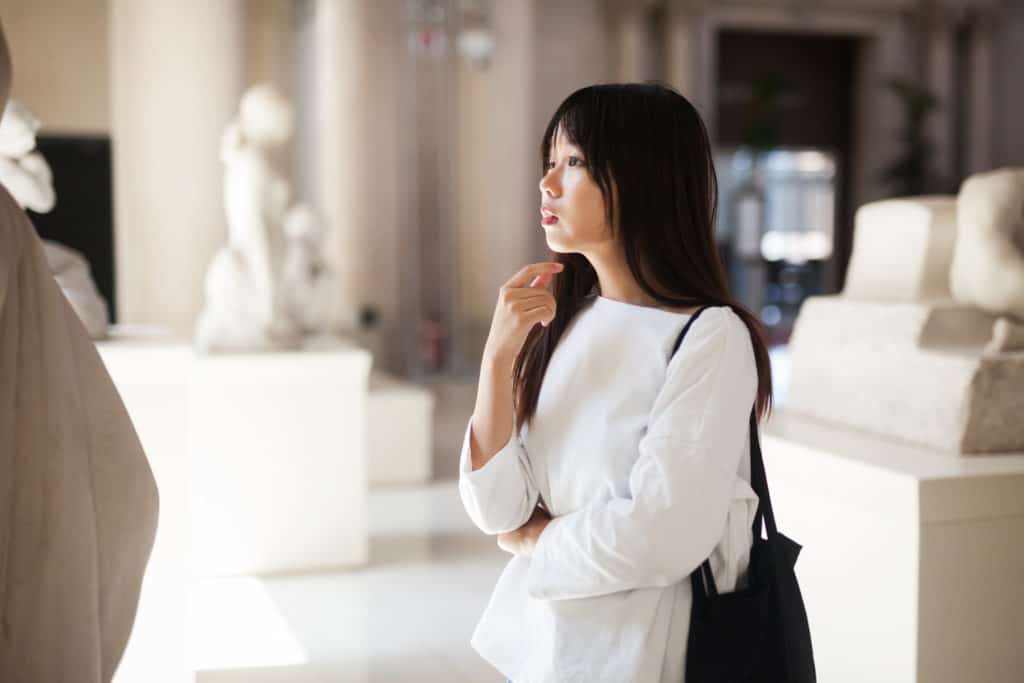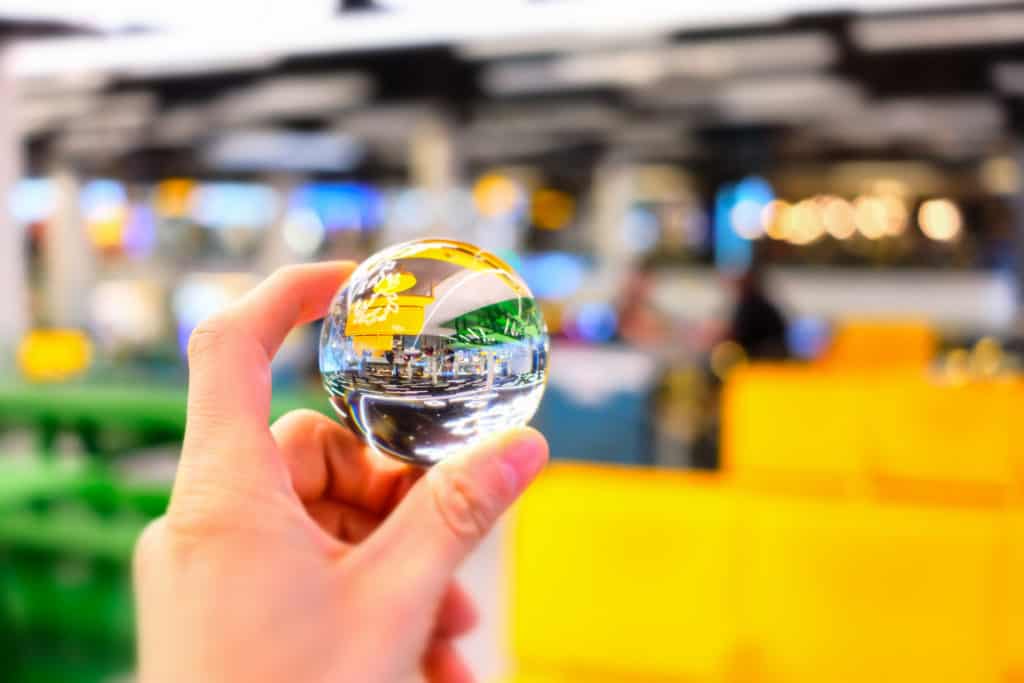It feels like I was given a secret decoder ring that unlocked the hidden elements in art. We love our trips to museums and galleries, but we simply walked around the rooms, mostly stopping at the famous pieces. With just a bit of learning, you start seeing clues to the artist's thoughts, culture, and secret perspectives on the world. Let's get you a key by first answering: what is art appreciation?
Art appreciation is the learning of established artistic principles used to create works of art. Artists and audiences acquiring an acceptable awareness of history, style, technique, culture, and context can find greater enjoyment of art forms in daily life and during the creative process.
Don't worry. I'm not going to send you off to a course, suggest art textbooks, or require a video lesson. We started simply soaking in sources in our spare seconds throughout the day. First, let's answer a few questions we had when we began our art appreciation journey.

What Is the Importance of Art Appreciation?
Art is all around us. You don't just find it in famous pieces from Van Gough or Picasso. You find it on magazine covers and within video games. It is a timeless creative skill that spans back thousands of years to cave paintings and will span thousands of years into the future as it continues to evolve.
Art Appreciation Helps Us Learn About Other Cultures
Think about all those times you sat in history class flipping through your textbook, seeing images painted and drawn by people of the past. You may not have thought of it at the time, but you were getting glimpses of people's thoughts and everyday lives.
Many ancient civilizations used art to document their lives since written language was not yet developed. By appreciating their art, we can better study how their society worked and relate personally to their struggles.
As civilizations evolved, art was not lost. In fact, we can learn so much about different cultures that exist today simply by taking a deeper look at their art. We can also compare the art of civilizations today to the art of the past and see how civilization, in general, has progressed throughout time.
Art Stimulates Personal Growth
If we are fortunate, throughout life, we are taught the importance of having an open mind. Although not always easy to obtain, we can get there by appreciating the art around us.
The beauty of art is that everyone perceives it differently. It is not meant to be taken as it is. Instead, you use your critical thinking skills to pull from your own life experiences to determine what the piece means to you.
When engaging in conversation about the piece, you will be exposed to an array of different perspectives since everyone's life experiences are different. By engaging in these conversations, you will come to appreciate each person's uniqueness and realize that there is always more than one solution to a problem.
As we take a deeper look into art, we learn how to think outside of the box. We begin to look at everything in life from various perspectives and understand the validity of others' views. It is a way of opening our minds to the many different possibilities in life.

How to Learn Art Appreciation?
We don't all have time to sit through an art course or flip through a textbook. In fact, there is no need for that. Learning how to appreciate art can be a fun and easy adventure.
Instead of a boring lecture, watch a quick YouTube video each day. It won't take up too much of your day and is a rather engaging way to learn new things.
Another way to learn is by going to different museums and taking your time looking at each piece. Pick a piece and analyze it. Ask yourself questions like:
- Are historical aspects incorporated into this piece?
- How does this piece make you feel?
- What was going on in history when this piece was made?
If you would like, you can even engage in conversation with someone about the piece. By doing so, you will open your mind to other perspectives and start to learn what art appreciation is all about.

Looking at Things from Other Perspectives
Appreciating art involves learning and understanding how to look at it from multiple perspectives.
An easy way to learn how to appreciate art is to start looking at objects around your home from different perspectives.
What does that lampshade look like upside down? How about the print on your bags - does it look different sideways? Learning how to formulate views of everyday objects from different angles and perspectives can help you appreciate many different artforms.
Next time you're sitting in a waiting room staring at your phone, try taking a look around the room and analyzing it. What do you get out of the wallpaper? These are easy tips to help you start to open your mind up.
Learning how to appreciate art doesn't have to involve reading lots of things. It can be as easy as looking for the art in the world around you that you may not have noticed before. It is about taking the time to formulate your own ideas about a less popular piece rather than skimming by it in an art museum.
How Do You Appreciate Art?
Art can be appreciated in three easy steps derived from art historian Erwin Panofsky's techniques.
- Look
- See
- Think
Look at What's in Front of You
Instead of just skimming by, stop and look at:
- What the piece is made of (i.e., paint, photograph, plastic, etc.)
- What is its style (i.e., rough, neat, shiny, dirty, thrown together, etc.)
- What are the visual elements (i.e., objects, people, scenery, etc. within the piece)
Artists deliberately choose materials and artistic styles that directly relate to the overall meaning of the piece. Identifying the piece's composition is an imperative starting point to come to understand the piece more fully.
See the Art
This second step is where you begin to apply meaning to the piece. See if you can identify any symbols within the piece and try to derive meaning from them. Symbols play a big role in a lot of different artwork.
Start to combine the mental notes you have made about what you looked at with what you see now. Ask yourself questions like does that rough, thrown-together style relate to the symbols depicted?
Think About the Piece
Art is like a puzzle. You need all the key pieces to see the big pictures. Once you have looked at and seen the art, it's time to add the final pieces to have it all come together.
This is all about interpreting what is before you. Context plays a big role in this final step. You need to use clues from the label to understand the piece, such as:
- Age of the particular artist
- Artist's name
- Title of the work
- Where the artist was born
- Year the work was created
This information will help you to understand the artist's culture and background that influenced the piece. You can ask yourself questions like:
- What could the artist be hinting at with this title?
- What do I know about common themes this artist may have across their pieces?
- What is, or was the artist's culture?
- What was going on in history at the time this art was created?
- What art movement may have been trending at the time?
By answering these questions and thinking about how the piece makes you feel by pulling from your own experiences, you can begin to derive meaning from it. Thus, you will have successfully appreciated art.
What Are the Purposes of Art?
When words fail to explain emotions, visual art takes on the job. It is a creative way to express one's beliefs without the need for words.
However, great art does not have just one purpose. In fact, there are several.
- For entertainment purposes
- For propaganda
- For psychological purposes
- For ritualistic functions
- For social causes
- To communicate
- To express imagination
- To initiate political change
- To augment written literature
The versatility of art allows it to be used for serious causes such as political or social change and for more laid-back reasons such as entertainment purposes.
Most religions use it to symbolize their divine-like beings. In contrast, some ancient cultures used it to communicate since they had not developed words yet.
At its core, art's purpose is to portray emotions. All of the purposes listed above have the end-result of conveying emotion to you. It could be to make you sad so that you want to change the current social climate or to determine your own emotions when used for psychological purposes.
No matter what it is, art gives people a way to express and share their emotions when words fail.